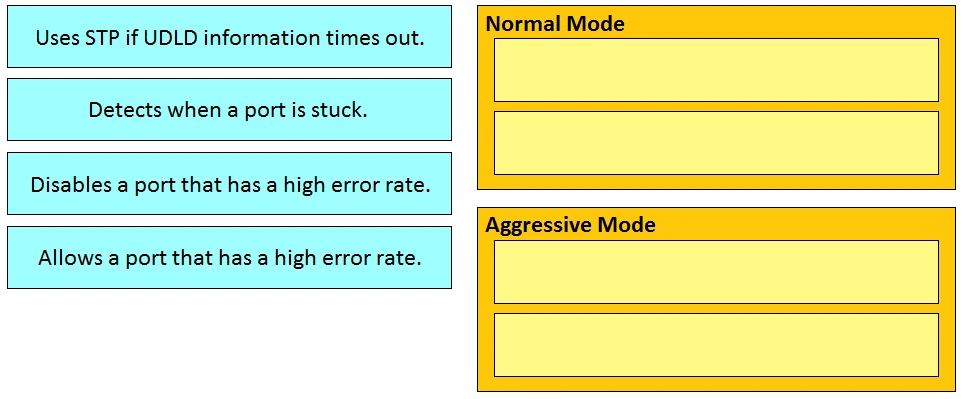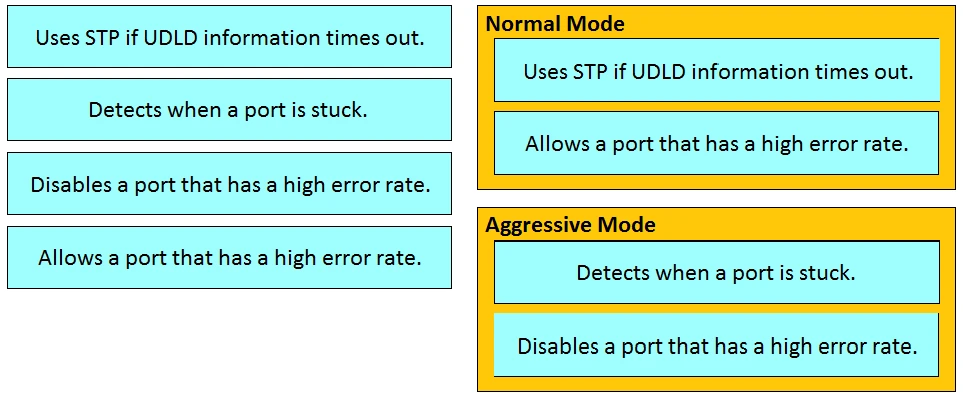Drag the appropriate from the left onto the current UDLD modes of operation on the right.
Select and Place:



FSPF (Fabric Shortest Path First) is a routing protocol used in Fibre Channel networks to determine the best path for data traffic. One key aspect of its operation is that routing decisions are based on the domain ID of switches. This allows the protocol to calculate the shortest paths through the network, ensuring efficient data transport. Therefore, a design consideration when implementing FSPF is that routes are based on the domain ID.
An OOB (Out-of-Band) management network in a Cisco Nexus data center provides a dedicated network separate from the data network for management purposes. This network allows for better network control and troubleshooting without affecting the production network. Specifically, it provides a Layer 3 path for monitoring purposes, allowing administrators to manage and monitor network devices without impacting the main data flow. Additionally, it provides a Layer 3 path for vPC (Virtual PortChannel) keepalive packets, which are critical for ensuring the stability of vPC configurations by preventing split-brain scenarios. OOB management networks are not used for server traffic or for vPC peer links.
Out-of-band management for each Virtual Device Context (VDC) on Cisco Nexus switches is typically provided by assigning each VDC a unique out-of-band IP address from the same IP subnet. This allows for logical isolation while ensuring that each VDC can be managed independently without conflict or overlap in the management network.
To route traffic between two VDCs (Virtual Device Contexts), you need to either connect the VDCs to an external Layer 3 device, ensuring they can communicate through an independent intermediary that handles routing (option A), or cross-connect the ports between the VDCs, so communication can occur directly through these connected interfaces (option B). These configurations are necessary because VDCs are isolated from each other by design, and direct traffic routing within the same device is not supported without external connections.